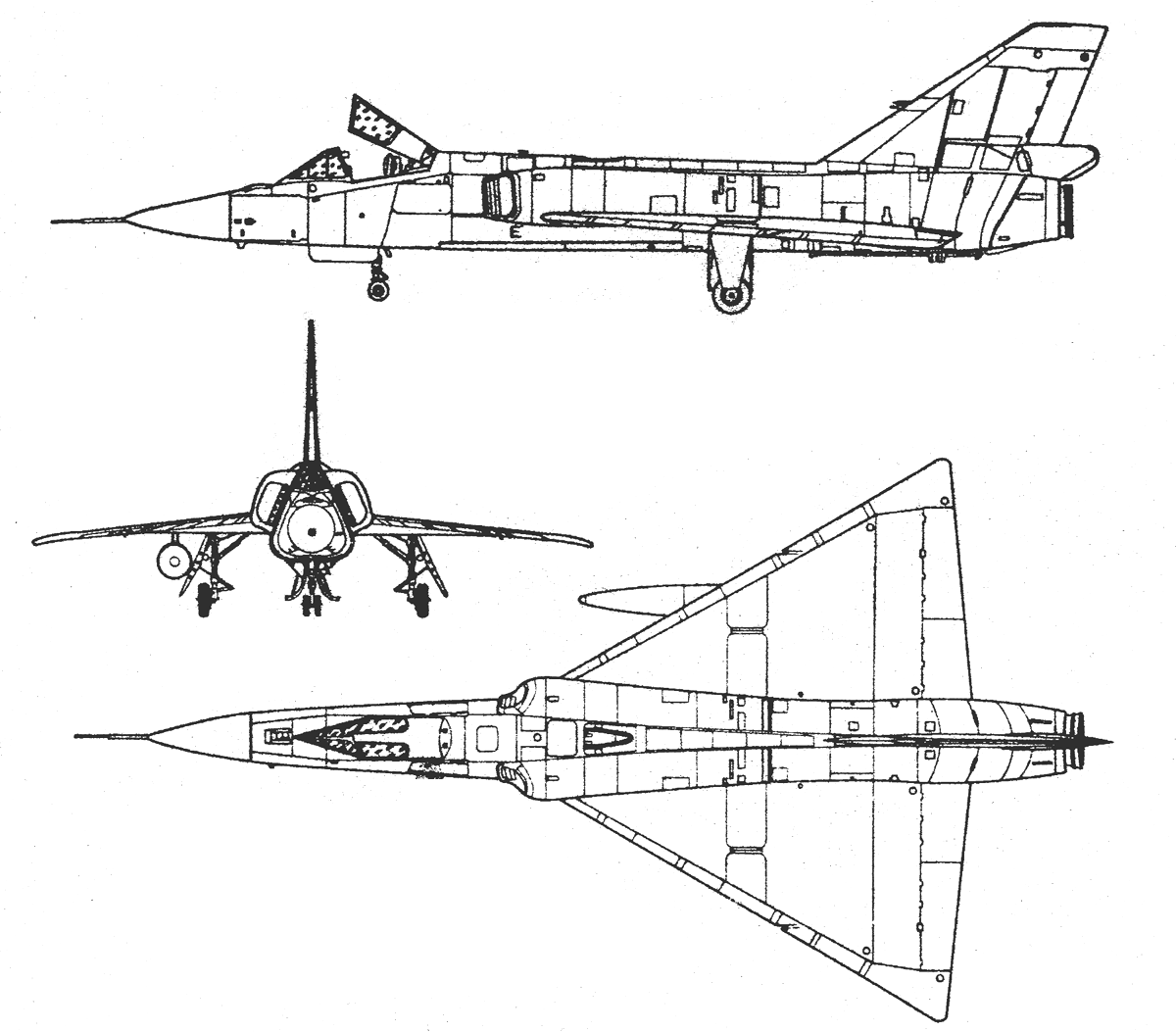The F-106 was not deployed in Vietnam as it was unable to carry bombs and its primary role of interceptor was useless against the enemy MiGs that refused to engage.
First manufactured in 1959, the F-106A was developed to be an all-weather interceptor against Soviet attacks. These aircraft were equipped with the MA-1 system, which took control of the aircraft to maintain proper altitude and attack position, as well as fire missiles. The MA-1 system could break the aircraft off from attack runs, come back to the vicinity of its base and return control to the pilot for landing. Production of these aircraft ended in 1960 after 277 had been built.

Serial Number: 58-0774
Manufacturer: Convair
Crew: One
Engines: One Pratt & Whitney J75-P-17 turbojet; 24,500 pounds thrust w/ afterburner
Wingspan: 38 feet 4 inches
Length: 70 feet 8 3/4 inches
Height: 20 feet 3 1/3 inches
Weight: 41,831 pounds loaded (maximum)
Speed: 1,525 mph (maximum)
Range: 1,500 miles
Service Ceiling: 53,000 feet
Armament: One AIR-2A Genie rocket and four AIM-4 Falcon missiles
Cost: $3,305,435
Hill Air Force Base never performed major maintenance operations on the F-106, however, it contributed significantly to its combat capabilities. With the assistance of Hill Air Force Base personnel, aircraft such as the F-101, F-102 and F-106 interceptors were able to carry Genie rockets in their internal bays. The Genie was the United States (US) Air Force’s first nuclear armed air-to-air rocket and Hill Air Force Base was assigned depot responsibilities for this weapon system in 1957. The Genie would remain the most lethal of the F-106’s potential firepower until 1986.
The F-106A on display was manufactured in 1959, and after spending some time at the Aerospace
Maintenance and Regeneration Center in Arizona, it was transferred to Illinois where it was converted to a QF-106 target drone. In 1998, the aircraft returned to Arizona as one of the last, six flying Delta Darts. In 2002, Hill Aerospace Museum acquired the aircraft and restored it for display.
The F-106 was not deployed in Vietnam as it was unable to carry bombs and its primary role of interceptor was useless against the enemy MiGs that refused to engage.
In 1981 the venerable F-15 Eagle came into service and replaced the F-106 for the United States Air Force.
A full four decades before the advent of the F-22, the Delta Dart was capable of cruising at approximately Mach 1.5, meaning it was able to break the sound barrier without use of its afterburner.